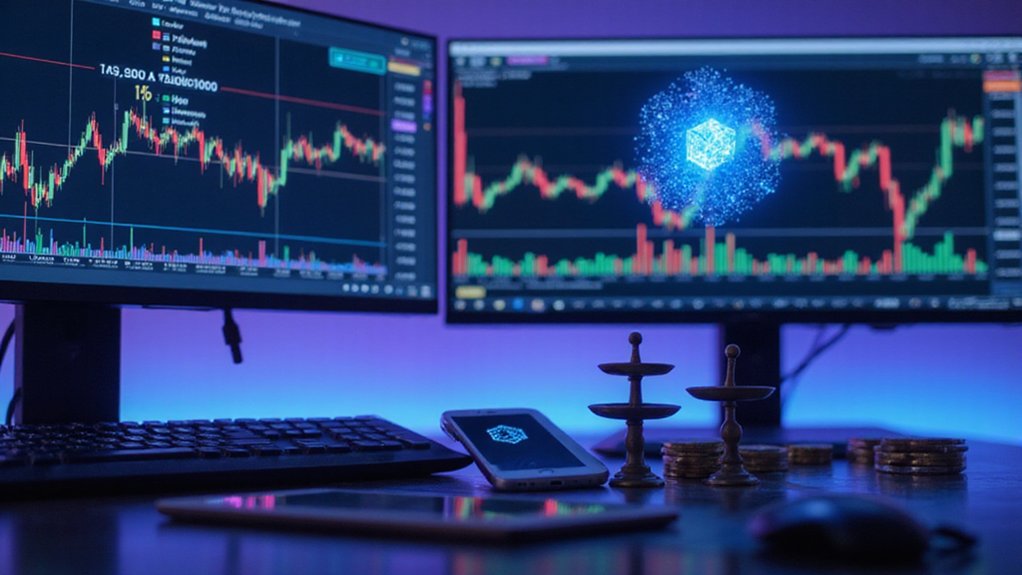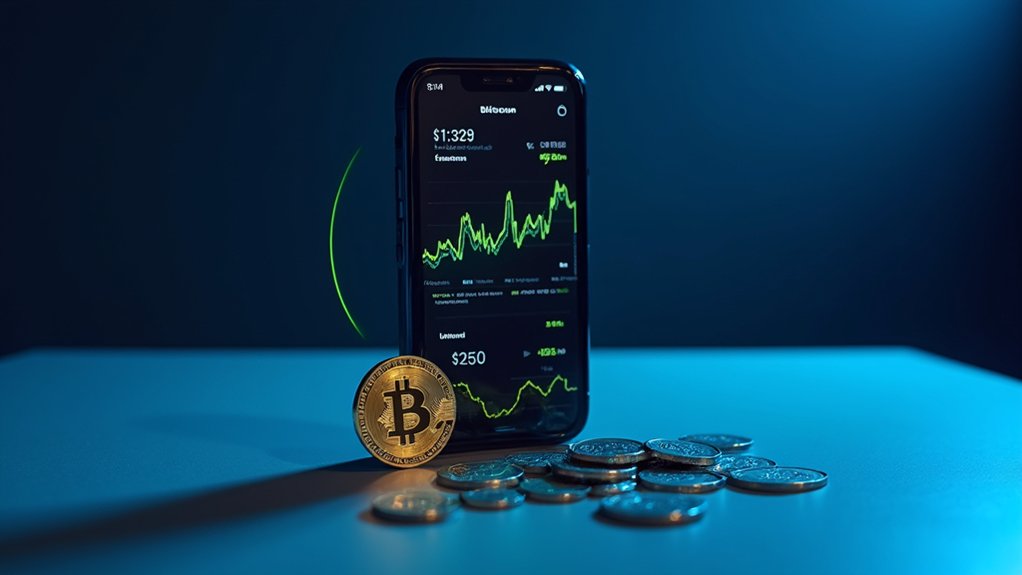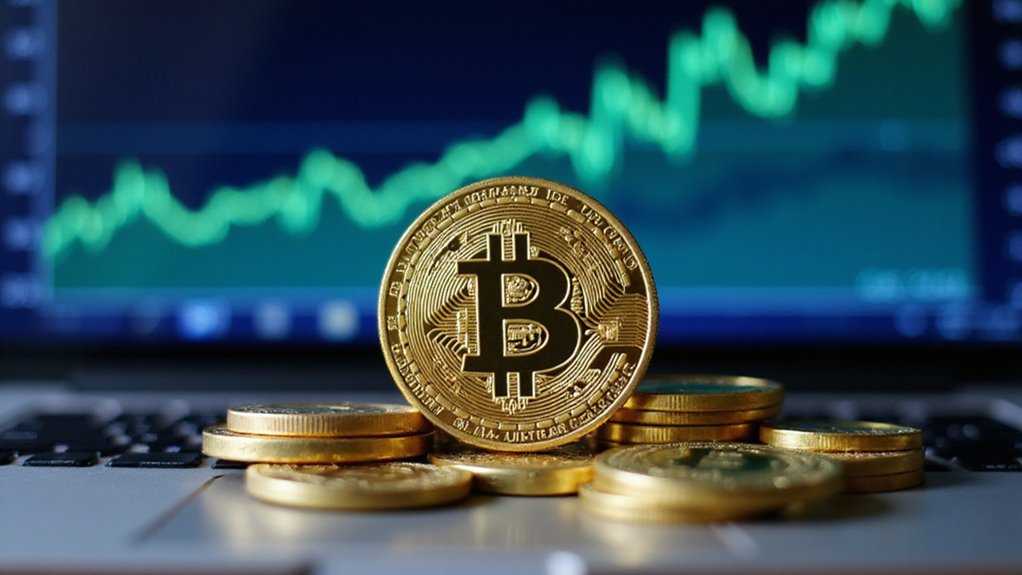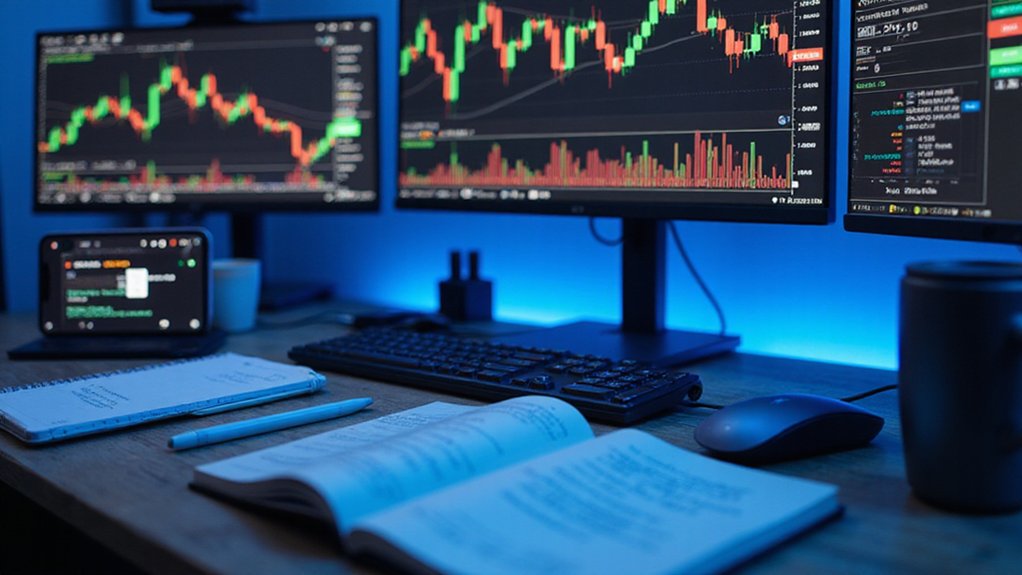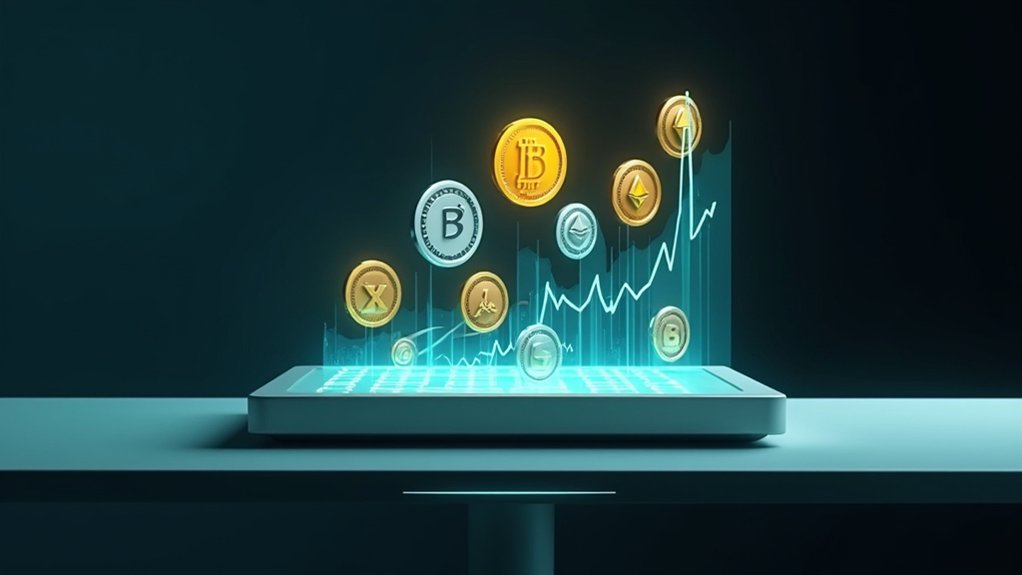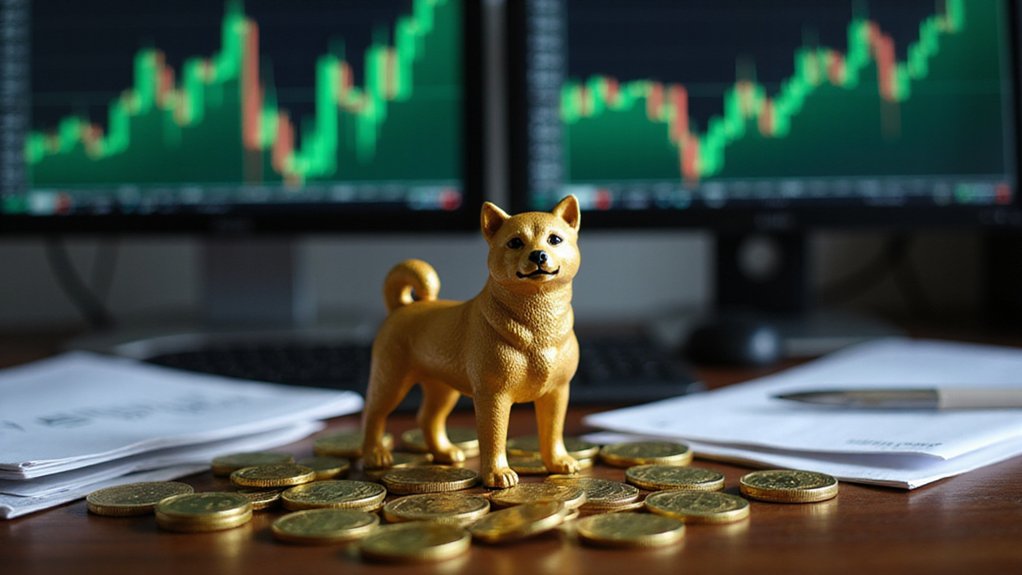Polymarket functions as a non-custodial prediction platform built on Polygon’s Layer-2 Ethereum network, sidestepping those pesky gas fees while allowing users to wager on binary outcomes via USDC-denominated share tokens. The protocol automates payouts through smart contracts, with pricing determined by algorithmic bonding curves that reflect market sentiment. Despite regulatory gymnastics—it’s an “information market,” not gambling, naturally—users in restricted jurisdictions simply deploy VPNs to participate. The ecosystem’s expanding governance features suggest there’s more than mere prediction at stake.
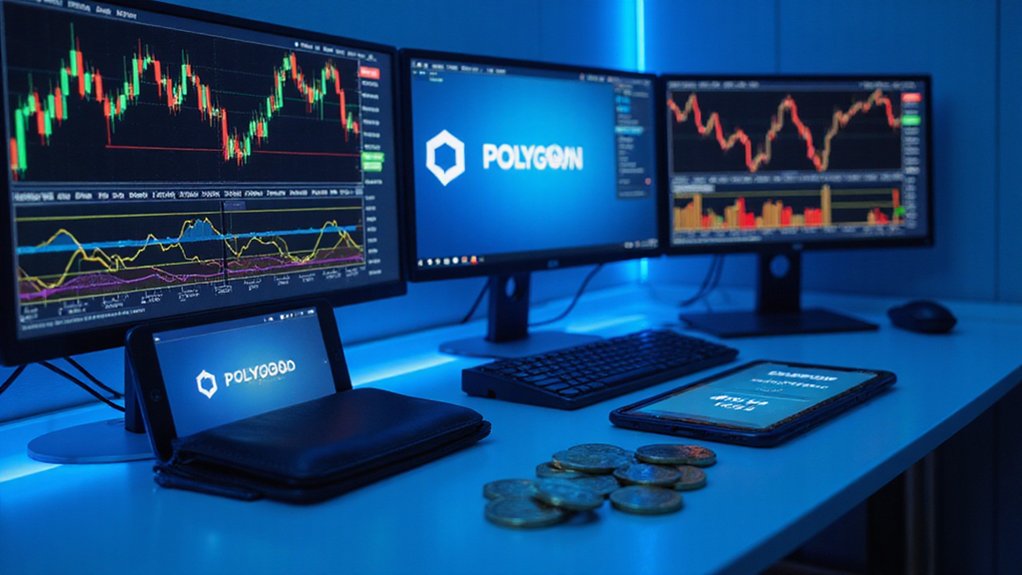
How exactly does a platform manage to fuse blockchain technology, prediction markets, and financial incentives into a cohesive ecosystem that attracts nearly 200,000 monthly users?
Polymarket achieves this through a sophisticated architecture built atop Polygon’s Layer-2 Ethereum solution—a choice that deftly sidesteps the prohibitive gas fees that have hamstrung so many promising blockchain applications.
Layer-2 solutions like Polygon enable Polymarket to bypass crippling gas fees that would otherwise suffocate blockchain innovation.
The non-custodial protocol automates payouts through smart contracts while employing stablecoins (primarily USDC) to eliminate the volatility that would otherwise render prediction markets exercises in double-guessing.
The platform’s mechanics revolve around binary outcomes—the delightfully straightforward “Yes” or “No” propositions that cover everything from political contests to cryptocurrency price targets.
Users connect wallets via MetaMask or comparable interfaces, deposit USDC, and purchase share tokens representing their predicted outcomes. MetaMask serves as a crucial gateway, allowing users to manage their Ethereum and ERC-20 tokens while maintaining control over their private keys.
These tokens maintain a 1:1 relationship with potential payouts; a $1 “Yes” share pays exactly that amount if the prediction proves correct.
The pricing, meanwhile, follows algorithmic bonding curves that adjust dynamically based on market sentiment and liquidity depths.
Market creation begins with users proposing events accompanied by unambiguous resolution criteria.
Once approved, these markets rely on oracles (primarily Chainlink) or decentralized arbitration to determine outcomes, typically resolving within 48 hours of the event’s conclusion.
Liquidity providers earn between 0.1-1% per trade for their stake in prediction pools—a rather modest yield given the inherent risks, but attractive enough to maintain functioning markets.
The platform plans to implement DAO integration for enhanced user governance and accessibility in the future.
The security architecture employs non-custodial design principles, ensuring users maintain control of funds while benefiting from regular smart contract audits.
Monetization occurs through protocol fees (1-2% per trade) and premium market offerings.
The platform experienced a surge in user interest after a viral tweet about the Titan submersible outcome in June 2023, demonstrating how real-world events can rapidly drive engagement.
Polymarket’s geographic accessibility remains its Achilles heel, with certain jurisdictions (notably the United States) requiring users to employ VPNs—a curious regulatory dance for a platform that ostensibly functions as an “information market” rather than gambling.
The distinction may seem semantic, but in financial regulation, semantics often constitute the entirety of the game.
Frequently Asked Questions
Is Polymarket Legal in My Country?
Determining Polymarket’s legality requires knowing your specific location, as its status varies greatly by jurisdiction.
The platform faces bans in Singapore, Belgium, France, and the U.S. due to unregistered gambling concerns, with additional restrictions in Thailand, Ontario, and countries under certain sanctions.
Even in restricted territories, many users circumvent blocks via VPNs—a practice that, while common, potentially violates local laws and Polymarket’s own terms of service.
Consult local regulations for definitive guidance.
How Do I Withdraw My Earnings From Polymarket?
To withdraw earnings from Polymarket, users must connect a Web3 wallet (containing their USDC) and navigate to the withdrawal section.
There, they’ll specify the withdrawal amount and destination address.
Several methods exist: manual withdrawals (requiring ETH for gas fees), peer-to-peer trading, using Polygon Bridge, or the Crypto.com integration.
Once USDC is withdrawn, it can be converted to fiat currency via exchanges and subsequently transferred to a bank account.
What Fees Does Polymarket Charge Traders?
Polymarket implements a relatively straightforward fee structure, charging traders a 2% fee exclusively on net earnings from winning trades.
This profit-only approach—with no fees on losses, deposits, or withdrawals—keeps the platform competitive.
The fee calculation maintains symmetry between buying and selling outcomes, adjusting dynamically based on price deviations.
While transaction costs remain minimal due to Polygon network integration, users should note that external gas fees may still apply during high network congestion.
Can Polymarket Predictions Be Manipulated?
Polymarket predictions, like all prediction markets, can indeed be manipulated. Blockchain evidence suggests instances of wash trading to artificially inflate volumes.
The platform’s structure—particularly its lack of fees—creates both vulnerabilities and self-correcting mechanisms.
Arbitrage opportunities across prediction platforms help counterbalance manipulation attempts, while the bond-based resolution system discourages false outcome reports.
Nevertheless, sophisticated actors with sufficient capital could potentially shift market odds temporarily before cross-market arbitrage restores equilibrium.
How Are Disputes About Market Outcomes Resolved?
Disputes on Polymarket follow a structured resolution process: a challenger posts a bond (typically $750) to contest a market proposal, initiating a 24-48 hour debate period where evidence is presented in UMA’s Discord server.
UMA token holders then vote on the outcome, with voting power proportional to token holdings.
The majority decision determines which outcome shares retain their $1 value, while incorrect outcome shares become worthless—a rather elegant system that, despite its complexity, generally produces rational resolutions.
